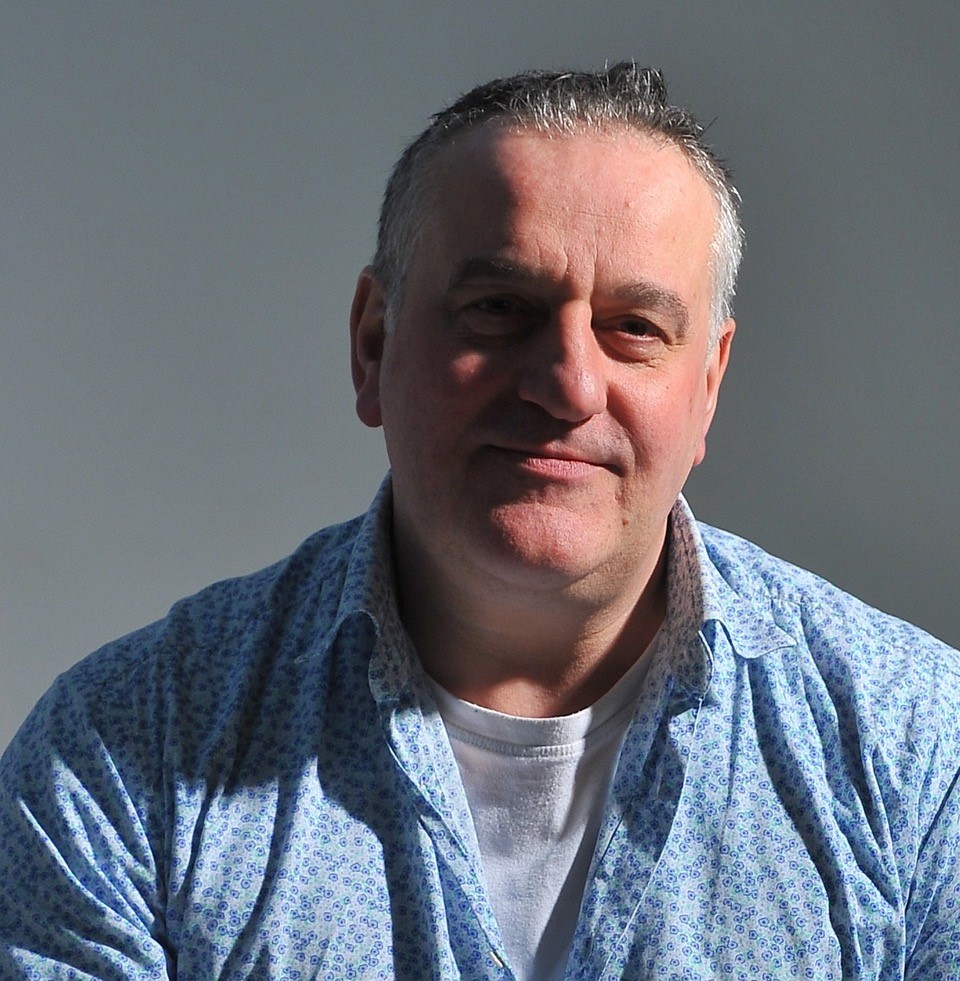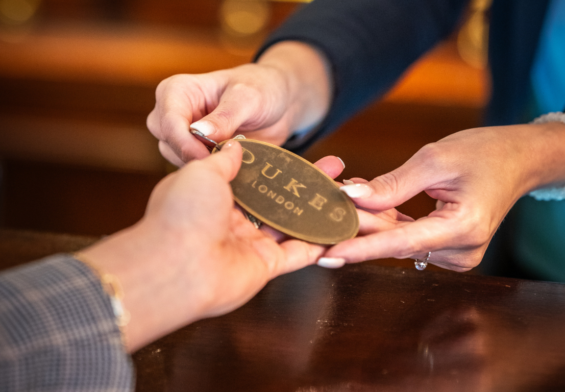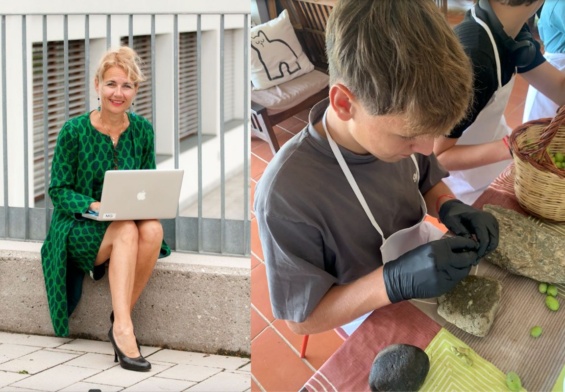Preneur World chats with the artist Mark Demsteader whom, according to The Daily Telegraph, is “one of Britain’s best-selling figurative painters”. He has held an annual solo exhibition with Panter & Hall in the West End of London since 2004.

1. Your journey to becoming one of Britain’s leading figurative painters is quite unconventional. How did your early years in Manchester’s Meat Market influence your approach to art and understanding of the human form?
I think it helped focus the mind on where I was, and more importantly how I was going to get out of there, it was a very physically tough and challenging environment to be in. It did also give me an understanding of form and the structure of things though, and I started to understand how muscle and bone connect and an idea of texture and mass which helped me develop my drawing skills eventually, the only other positive I took from there was I had gained a strong work ethic, that was going to help me a lot more than I realised as others who might be better artists than me at the time would fritter away their time where I wouldn’t.
2. Completing foundation courses at Oldham and Rochdale colleges of art must have been a significant step in your artistic development. How did these experiences shape your early style and techniques?
It was a good way of being introduced to the process of art and its various forms and applications, I think the variety of different disciplines also helped and a range of subjects from painting, printmaking, graphics, textiles, ceramics etc was really useful.
3. The 1980s art scene was dominated by conceptual art, making it challenging for figurative painters. How did you stay motivated and continue honing your craft during those years?
I was always into the old masters and victorian Painters in particular, so would go to the local art gallery in Oldham and study the permanent collection that was donated to them in the victorian times. My basic philosophy was if it was humanly possible to paint like J W Waterhouse or Lord Leighton then that was what I was going to try and do, even if I didn’t get to be as good as them I could become good enough and although the art world was a million miles away from me I knew I could work harder than other artists and that would be enough to hopefully make a living at it. (Didn’t realise at the time it would take about 15 years though).
4. Working as an art technician at an Oldham grammar school gave you time to build your portfolio. How did this period influence your artistic direction and what lessons did you take from this experience?
It was a blessing really as I had been going to life classes in the evenings for many years at that point, and to finally get a job where I didn’t have to get up and start work at 4am in the morning was bliss the head of the art department also encouraged me to demonstrate what I had learned to some of the pupils as well.
5. Your persistence paid off when a local gallery offered you space in a mixed show, resulting in the sale of six works. How did this breakthrough impact your confidence and career trajectory?
It was amazing at the time, I had been trying to get in a gallery for about 4 years by then and was constantly rejected, but a gallery in Blackheath gave me a chance, the show opened on the Saturday morning and by the end of the day I`d sold all the work I put in, and the money was equivalent to 1 years pay in my job so I decided to quit and go full time as an artist. At least I would have enough to get me through the year if I didn’t sell another painting but the work was well received so I didn’t look back.
6. You have often been praised for your technical ability and sensitivity in depicting the human form. Can you share some insights into your creative process and how you achieve such lifelike representations?
I think it was the fact I just practiced for many years and studied the great painters of the past and take bits from each one I liked, which ended up in this kind of style I use, it wasn’t a conscious development but if you spend long enough doing something it eventually becomes natural.
7. Your collaborations with renowned figures like Erin O’Connor, Marianela Nuñez, and Emma Watson have garnered much attention. How do these partnerships influence your work and artistic vision?
I sometimes just enjoy a complete change from the themes I am working on and occasionally I am lucky enough to have the opportunity to study 1 person in depth and find it a positive experience to be able to do that, I have met many fabulous people over the years and it really has been wonderful to be able to really study the people I have met.
8. In a market often obsessed with conceptual art, your figurative work stands out. What do you think draws collectors to your paintings, and how do you feel about the resurgence of interest in traditional life drawing?
I went through a period of studying conceptual art a bit but found it soulless it just felt like an excuse to cut out the hard work and justify itself. I think in an age of instant imagery and so much of it we become saturated by it, I hope that by having learned to express form and emotion over a long period of time it can give the viewer an idea that the image is somehow real and has some merit to it, I think like most things art can go in and out of fashion but traditional painting and pure observation will always have a place.
9. Your work combines detailed observation with surface texture and balanced compositions. Can you discuss the evolution of your style and the classical themes that continue to inspire you?
I think I just amalgamated a lot of different styles in to one and I would look at the looseness of singer sergeant and the details of Vermeer and think how can I take a bit of that and somehow mix them together, and so I would give focus to the face and let the rest just dissolve into the background and add a bit of Degas colour and Rembrandt lighting etc and so on, its all a bit of a mashup.
10. Being a headline artist at the Henley Festival’s visual arts showcase this year is a significant honour. What can attendees expect from the Panter & Hall exhibition, and how does it feel to be recognised at this prestigious black-tie festival?
It’s great for me as someone who grew up in the industrial north working in a meat market and remembering the hard times, then having the opportunity to show at such a fabulous setting as Henley, really does make me appreciate all the clients who have invested and believed in my work which has allowed me to go on this journey, and i`m very grateful to have had the opportunity to do so.
11. Your art has been included in many important collections and you’ve received accolades such as The Lyceum Prize and The Sidney Andrews Scholarship. How do these achievements influence your work and future aspirations?
I tend not to look too much at any kind of accolade as I remember when I was trying to get a gallery interested in me I would get on a train to London and just walk in galleries and asking if they would look at my work, I didn’t want any praise but I wanted criticism so I could improve and I don’t think that has ever left me. I`m always thinking that the next set of works I produce will be my best, so it is a constant striving not just to improve but to feel as if I am fulfilling some sort of opportunity that I have been given.
12. Looking back on your career, what advice would you give to aspiring artists who face similar challenges in a market that may not always favour their preferred style or medium?
I would always say follow whatever it is that drives you to want to paint etc, don’t look at what’s fashionable or current as it won’t always be that way but just do it to the best of your ability and the rest will hopefully take care of itself.
Mark Demsteader’s paintings, curated by Panter & Hall, will be on display in the Ruby Gallery at the Henley Festival from Wednesday to Sunday, July 10 to 14. For more information, visit henleyfestival.co.uk


